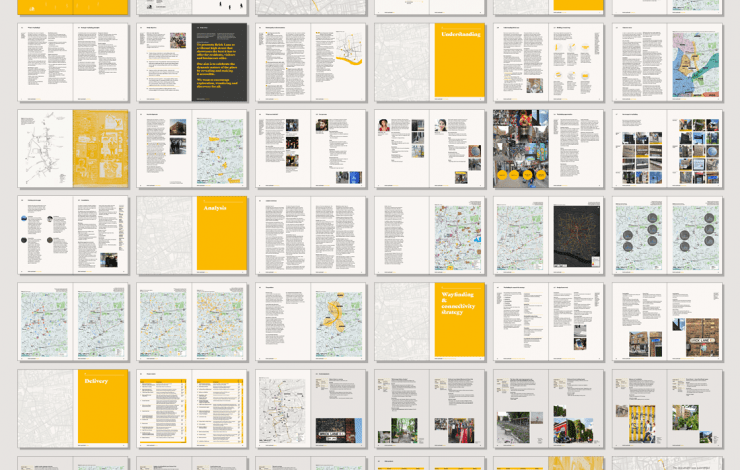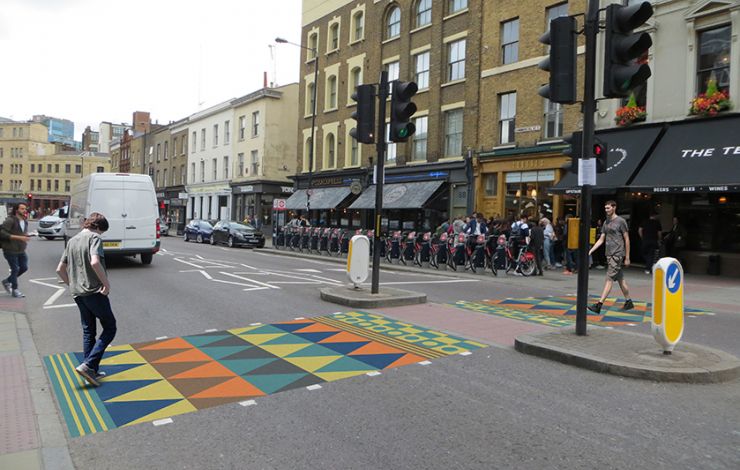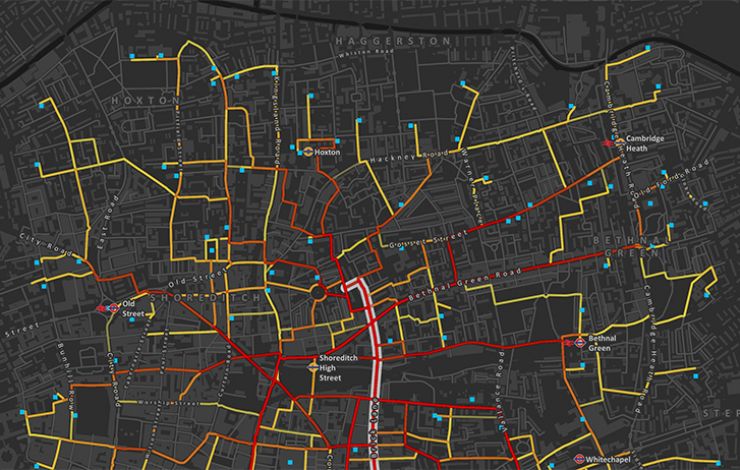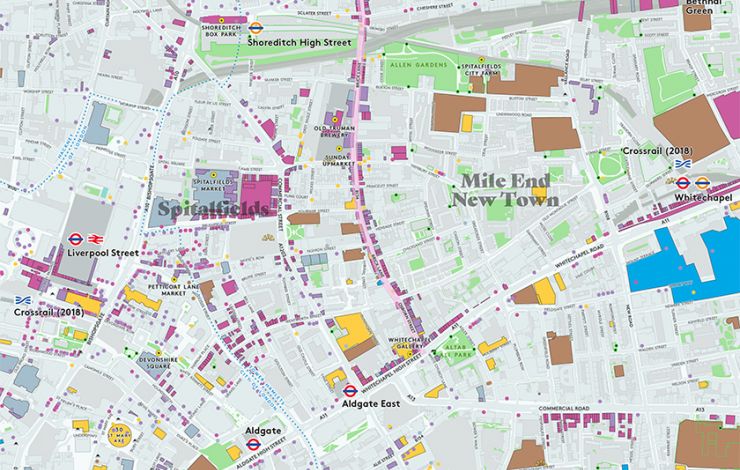Brick Lane is blessed with a strategic location in East London, it is well connected and at the centre of an array of attractions of local and city-wide relevance. It is a well-known area of the city, which features in tourist guides, has a rich history and is often seen in movies. Its character is a paradigm of London’s multi-cultural heritage. The post-recession years have also seen the arrival of several large developments in the proximity of Brick Lane as well as public realm improvements and infrastructure projects. Despite this incredible mix of ingredients, Brick Lane is not fully capitalising on its potential, and struggles to secure benefits for its businesses and residents.
Brick Lane's current movement patterns are generated by key local attractors such as Spitalfields Market, the Truman Brewery, Petticoat Lane Market and, beyond, however they only access a short section of Brick Lane. A dedicated connectivity and wayfinding strategy offered the opportunity to capture and spread the footfall along the entire street as well as turn Brick Lane into a key pedestrian north-south route, linking all the attractions in the area and reinforcing the street's competitiveness.
As a first step in establishing a wayfinding strategy that supports smaller destinations across town centres, the London Borough of Tower Hamlets wanted to:
- Develop a high-level wayfinding strategy for Brick Lane; and
- Identify a series of characterful, creative, and distinctive interventions to increase footfall and aid discovery and exploration.
These interventions will focus on wayfinding but should also consider other opportunities for public art and public realm improvement to support the area's legibility, connectivity and overall quality. The identified concept projects contain:
- project description/type;
- costs;
- priority level; and
- risks.
The ambition is that this high-level strategy and the identified interventions should form part of a more robust strategy and scheme for wayfinding within the wider borough.
We identified a wide range of project proposals including improvements to building facades, the development of a cultural trial through to larger scale projects including the design of a pocket park behind the Whitechapel Gallery. The final report was submitted to the London Borough of Tower Hamlets in early September 2017. Upon submission, this report was presented to the Council in order to identify projects to take forward to implementation in 2018. At the time this document was sent to print, ten projects had been selected for development.



